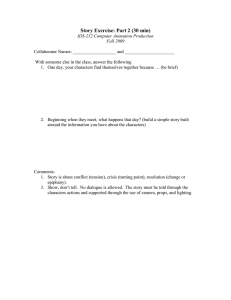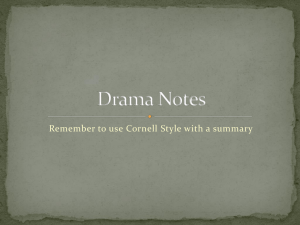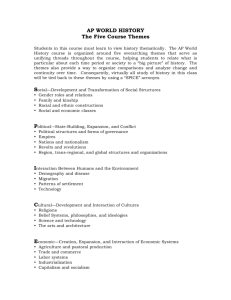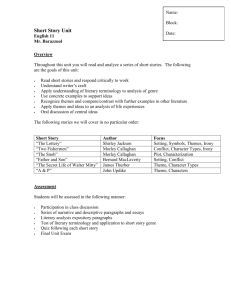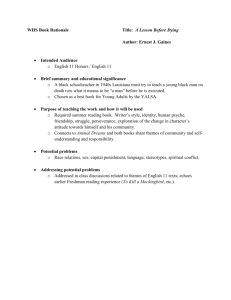Elements of Drama
advertisement
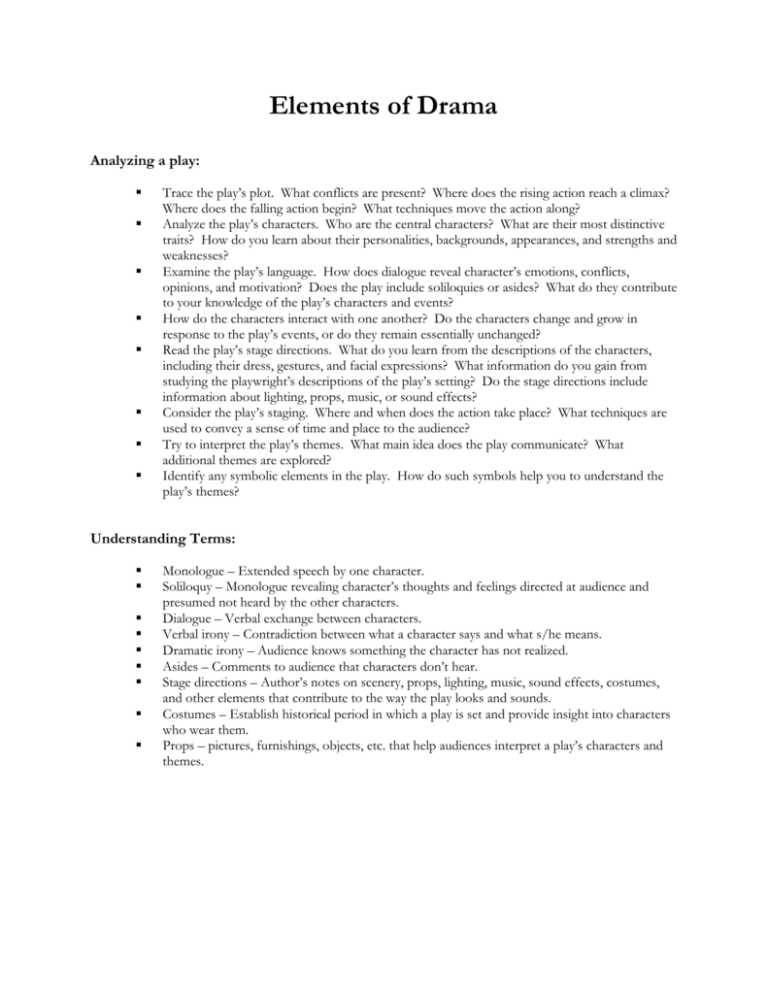
Elements of Drama Analyzing a play: Trace the play’s plot. What conflicts are present? Where does the rising action reach a climax? Where does the falling action begin? What techniques move the action along? Analyze the play’s characters. Who are the central characters? What are their most distinctive traits? How do you learn about their personalities, backgrounds, appearances, and strengths and weaknesses? Examine the play’s language. How does dialogue reveal character’s emotions, conflicts, opinions, and motivation? Does the play include soliloquies or asides? What do they contribute to your knowledge of the play’s characters and events? How do the characters interact with one another? Do the characters change and grow in response to the play’s events, or do they remain essentially unchanged? Read the play’s stage directions. What do you learn from the descriptions of the characters, including their dress, gestures, and facial expressions? What information do you gain from studying the playwright’s descriptions of the play’s setting? Do the stage directions include information about lighting, props, music, or sound effects? Consider the play’s staging. Where and when does the action take place? What techniques are used to convey a sense of time and place to the audience? Try to interpret the play’s themes. What main idea does the play communicate? What additional themes are explored? Identify any symbolic elements in the play. How do such symbols help you to understand the play’s themes? Understanding Terms: Monologue – Extended speech by one character. Soliloquy – Monologue revealing character’s thoughts and feelings directed at audience and presumed not heard by the other characters. Dialogue – Verbal exchange between characters. Verbal irony – Contradiction between what a character says and what s/he means. Dramatic irony – Audience knows something the character has not realized. Asides – Comments to audience that characters don’t hear. Stage directions – Author’s notes on scenery, props, lighting, music, sound effects, costumes, and other elements that contribute to the way the play looks and sounds. Costumes – Establish historical period in which a play is set and provide insight into characters who wear them. Props – pictures, furnishings, objects, etc. that help audiences interpret a play’s characters and themes.
